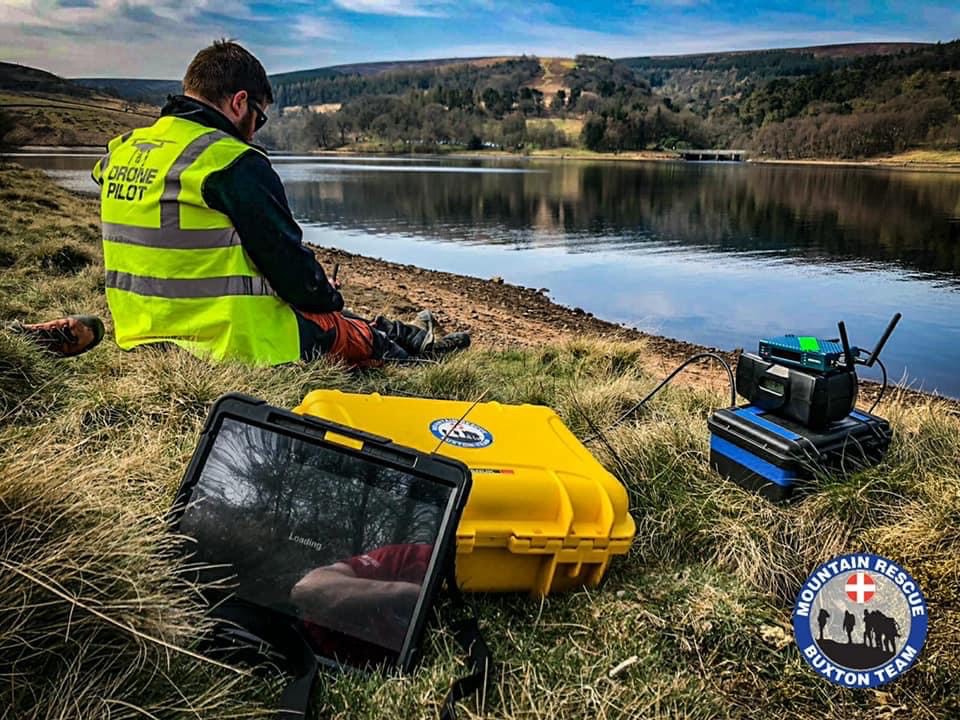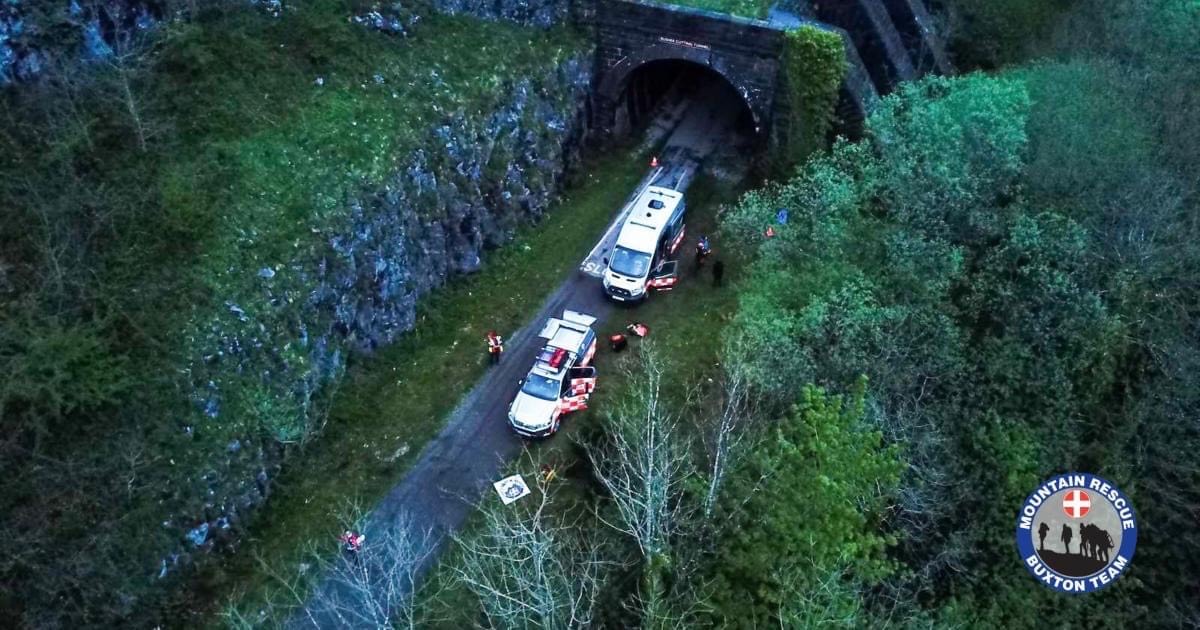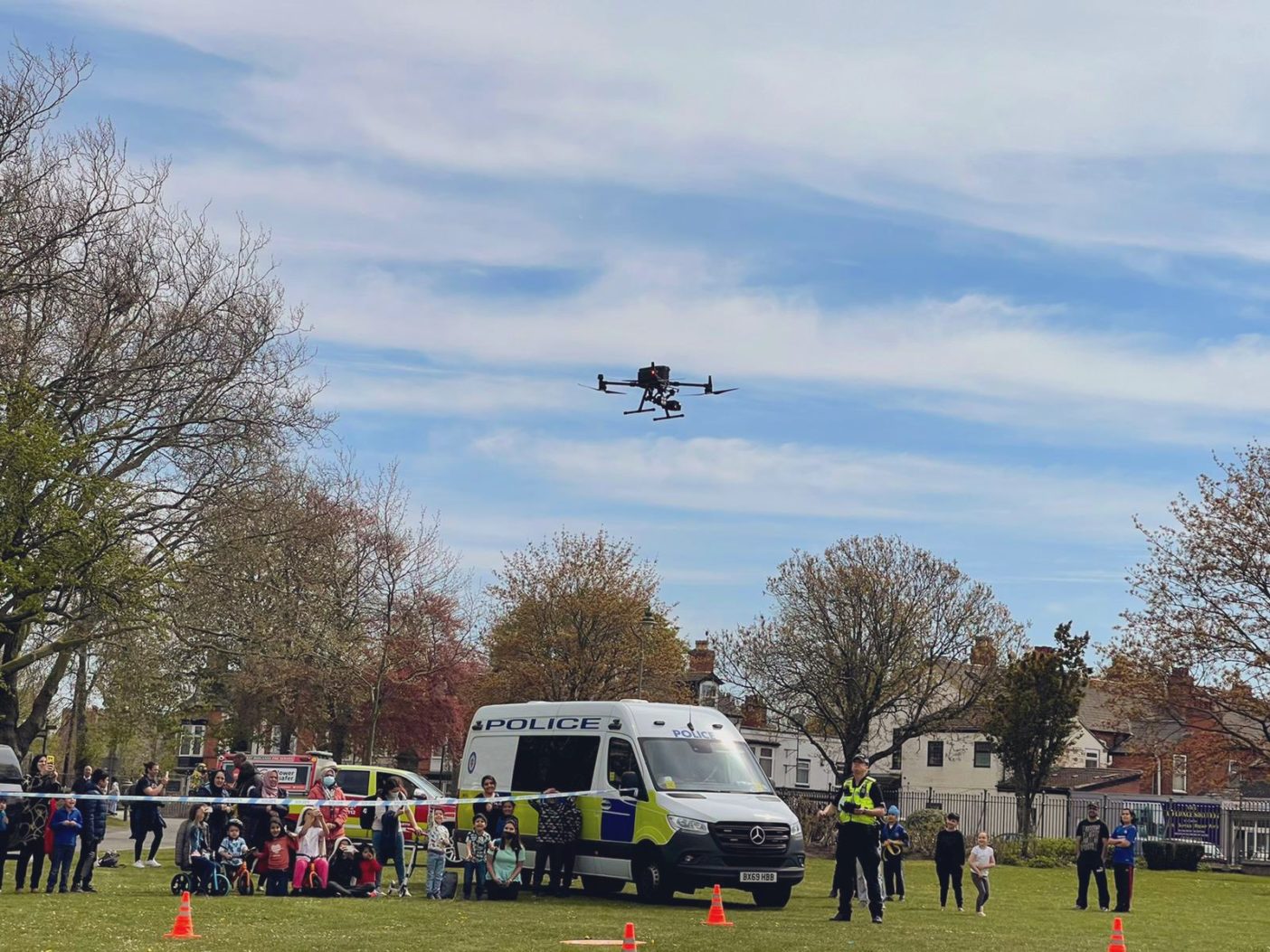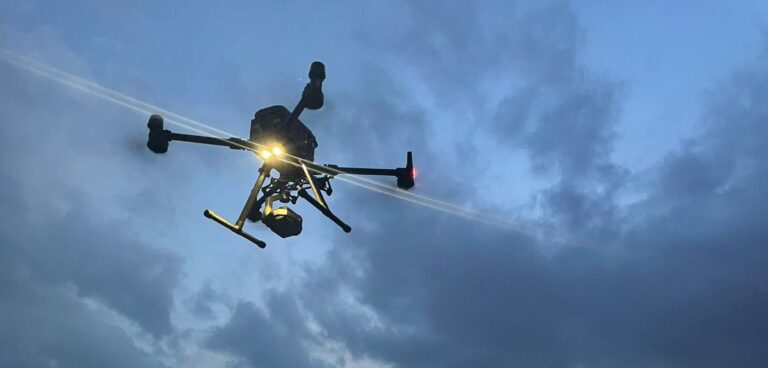Katie Searles explores how unmanned aerial vehicles are becoming a vital ‘eye in the sky’ for the UK emergency services and search and rescue missions…
Technology company DJI has mapped the number of people officially rescued by drone, claiming the number currently sits at 824 in 38 countries. Last year alone West Midlands Police (WMP) oversaw 3,450 drone f lights by 46 trained pilots across the English region as part of efforts to help save lives, capture evidence and prevent crime – whether during an evolving incident or as part of a pre-planned instance, such as sporting events or protests.
All drones are funded by the Asset Recovery Fund as part of the Proceed of Crimes Act, meaning the technology is paid for by a convicted criminal’s cash. With the ability to live stream footage to command centres, unmanned aerial vehicles (UAVs) enable WMP to make informed decisions and free up its officers for other tasks, while the technology’s thermal imaging capability and ability to cover vast areas in short periods of time means police can even spot something crucial that would otherwise be obscured from view from the ground. “We recently had a murder suspect flee the scene of a crime over the rooftops of several buildings after a stabbing incident,” says Sergent Keith Bennett, drone/UAV lead at WMP. “We were able to conduct the search from the sky by drone and the murder weapon was located on the roof.
“The knife – a key part of evidence linking the offender to the crime – was quickly located in the guttering. In the absence of the drone, it would have taken several specialists search-trained officers hours to physically search the area, which would have exposed them to the inherent dangers of searching on rooftops.”
Officer protection is regarded as a major benefit of using UAV systems – putting a drone into dangerous areas mitigates risks associated with police officers manually searching hazardous locations such as rooftops or quarries. However, according to Bennett, one of the biggest challenges WMP has faced so far concerns public acceptance and building trust in the fledgling technology.
“We’ve had to work really hard to legitimise police use of drones within our communities,” he says. “We placed a real emphasis on showcasing our technologies at public events and on social media. We’ve got 47,000 Twitter followers and this really helps us to build that public confidence,” he explains.
As Bennett suggests, WMP has worked to be “open, honest and transparent”, with surveillance assessments published to showcase exactly what is being achieved. WMP is also looking to the next generation of drone pilots through its Youth Engagement Project, which has seen officers visit 33 schools to discuss responsible ownership and build relationships with the younger community.
While WMP currently utilises nearly 20 different types of drones, Bennett is already looking to further technological advances and how they could benefit the police force. “As we evolve and develop, we’ll be asking academia and industry to look at helping us put together a bespoke aircraft that can be used not just for police and blue light services but also combined authorities. “Everybody can use drones for the greater good. It is the way forward, isn’t it? When you think drones produce 96% less carbon emissions and 60% less noise pollution than helicopters, it’s clear that the wider community impact is a lot less with a drone.”

Land, air and sea
Blue light services are not the only organisations benefitting from drone technology. Whether it is searching for lost climbers in mountain ranges or exploring coasts to protect those in the water, rescuers are fast incorporating drones into their missions. In 2019, the Buxton Mountain Rescue Team (BMRT) began using drones for search and rescue (SAR), becoming the first team in England and Wales to gain a Permission for Commercial Operation (PfCO) from the Civil Aviation Authority (CAA). The following year BMRT set out an ambitious three-phase strategy to advance its use of drones. Phase One saw BMRT routinely deploy drones and collate data to highlight potential barriers. The team assisted with monitoring moorland fires, recording damage and identifying sources of water. Drones were also deployed during a multi-agency training exercise to provide overwatch, enhancing the situational awareness of commanders on the ground.
“The use of drones within mountain rescue allows us to maximise the chance of locating and safely recovering a casualty or missing person, by searching large and challenging areas of land quickly while minimising the number of and severity of risks I must expose my team to,” says Rod Stordy, BMRT team leader and drone lead.
Phase Two, which is currently underway, sees the team working to train more pilots before later this year moving into Phase Three, which looks to obtain a new higher specification of drone to resolve any challenges identified in the early phases, such as operating in poor weather conditions. Another organisation embracing UAV technology is the Maritime and Coastguard Agency (MCA), which used drones alongside its helicopters, planes, boats and cliff rescue teams on missions last summer. For the first time, MCA SAR helicopters and fixed-wing surveillance aircraft were joined by UAVs at sea and over land in North Wales.
According to the MCA, this air support was used alongside “state-of-the-art radio networks and computer systems gathering vital information about incidents on the coast and at sea”. A spokesperson adds: “The Maritime and Coastguard Agency is committed to exploring new technology and its technical teams frequently assess, review and evaluate the effectiveness of unmanned aircraft so that we are able to meet our requirement to deliver search and rescue at the coast and in the sea.”

Firmly in sight
While emergency services and SAR organisations are taking advantage of this nascent technology, all parties, including the UK CAA, are working to ensure drone systems are safely deployed. “Every way we come at this from is safety, that’s it, there’s no other element for us,” says Jonathan Nicolson, assistant director and head of campaigns at the CAA.
Under current regulations SAR drones must be kept within the visual line of sight, with some exceptions given to emergency services operating in segregated air space, or even within a burning building. The BMRT says it understands the rationale behind this but stresses it can also limit the effectiveness of the drones. Search areas and incidents sites are often more than 500m from a vehicle access point, which means UAV pilots must carry drones over all kinds of different and challenging terrain, delaying the benefits the technology brings once airborne. With the ability to operate drones beyond visual line of sight (BVLOS) much sought by developers and users alike, the trialling and testing of the technology becomes ever more critical, says Nicolson. By enabling proof of concept exercises the CAA can “be really certain that it’s going to be safe when we do it”.
According to Nicolson, the trials involving industry and academia over the last few years have facilitated a build-up of knowledge, data and confidence, “and that building of the picture enables you to open it up, which is the endgame,” he adds. Bennett agrees, explaining that WMP is one of four UK police forces working with industry and universities “to better understand the capabilities that BVLOS drones may provide to police aviation in the future. “We’ve got a five-year plan of where we would like to be in the future,” he concludes.
Home base
West Midlands Police (WMP) is working with Urban-Air Port, developer of the world’s first operational vertiport for advanced air mobility, to provide a base for its crime-tackling drones. The facility, which is due to launch this month, will see WMP build a network of take-off and landing sites designed to boost operations. WMP Sergent Keith Bennett says: “We’ll need suitable ground infrastructure to be deployed from. Just like flying taxis and cargo drones, emergency service drones will need such structure.” Air-One, based next to Coventry Building Society Arena, will provide WMP with a base for its 24/7 service, with drones offering opportunities for its officers to continue “preserving life as well as preventing and detecting crime.”
 Out of sight
Out of sight
The UK’s National Police Air Service (NPAS) is leading a project that aims to better understand the capabilities that beyond visual line of sight (BVLOS) drones may provide to police aviation. On behalf of the police service nationally, NPAS is working collaboratively with forces to accelerate understanding on how to integrate alternative technology into future air support capability. This is predominantly in area searches for missing and vulnerable people, suspects, vehicles and property. The project, funded by the Home Office, will not only consider drone types but also command-and-control and hazard detection systems, to ensure compliance with Civil Aviation Authority (CAA) regulatory policies. Other considerations will include the potential value for money and environmental gains of drone use, plus a reduction in noise compared to conventional aircraft. NPAS said this is a complex and detailed piece of research work, involving significant regulatory implications, and is still in its very early, exploratory stages. While a number of police forces currently deploy drones, the current capabilities are restrictive. Thus, this project is specifically looking at future technologies, giving necessary regard to compliance with strict CAA regulatory requirements.
This article originally appeared in the April 2022 issue of Robotics & Innovation Magazine








